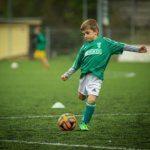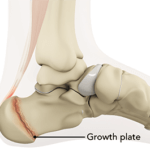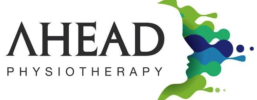
Has your sporty, active child been complaining of heel pain? Have you noticed them limping, or not getting involved in sport as fully as they normally would? Are they aged between 8 and 14 years old?
They may be suffering from Sever’s disease (“calcaneal apophysitis”), the most common cause of heel pain in adolescence.
WHAT IS IT?
It is characterised by heel pain in one or both heels caused by repetitive strain from running and jumping. It is common in this age group due to the growth plate of the calcaneus not being fully fused to the calcaneal bone.

The calf muscle attaches to the growth plate, via the achilles tendon, which means that pulling of the calf muscle can cause inflammation and irritation at the attachment to the growth plate.
WHAT ARE THE SIGNS AND SYMPTOMS?
- Heel pain with walking, running and/or jumping
- Pain on palpation/touching the heel
- Limping
- Walking on toes to protect the sore heel
- Inability to “push off” strongly, resulting in lack of speed/power
- Tight calf muscles
- Often coincides with periods of growth spurts.
WHAT CAUSES IT?
- Age (approx. 8-14 years)
- Activity (usually occurs with repetitive loading through sport/activity)
- Tight calf muscles (exert extra strain on calcaneal growth plate)
- Growth spurt (calf muscles lag behind the elongation of the shin bone/tibia, resulting in tightness and extra strain on the heel)
- Biomechanical issues, such as flat feet or high arches, can contribute.
WHAT CAN BE DONE ABOUT IT?
- Relative rest (reduce the loading on the heel by reducing the aggravating activities)
- Ice regularly, especially after activity (reduces the inflammation)
- Offloading the heel (heel wedges to elevate the heel, or other orthotics can sometimes be beneficial)
- Calf massage – loosening the calf muscle will offload the heel
- Calf stretching – TAKE CARE with stretching. Loosening the calf may help overcome Sever’s disease, however stretching in the acute phase has the potential to irritate the heel where the achilles attaches. Seek guidance from your physiotherapist as to whether it is safe to be stretching.
- Football boots! Believe it or not, your choice of football boots can play a role in offloading the heel. Look for football boots with a “heel drop” of 10mm (ie. the heel is 10mm higher than the height of the toe box). Asics are one popular brand which incorporate this heel drop in their kids soccer boots range.
- Physiotherapy assessment and input can help guide children through what can be a difficult condition which can affect their enjoyment and participation in sport. A good therapist will help encourage ongoing safe participation in appropriate sport/activity with principles of offloading applied to allow for healing and improvement to occur.
